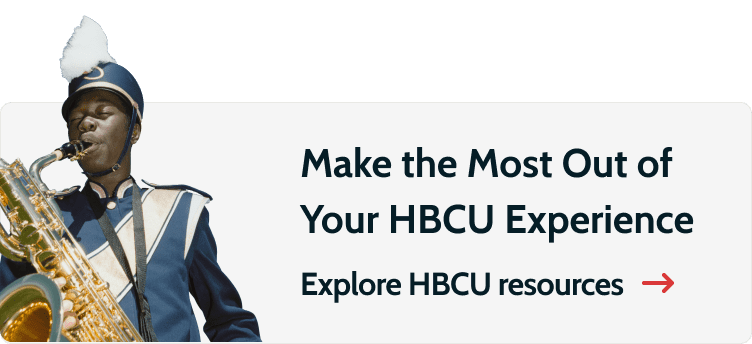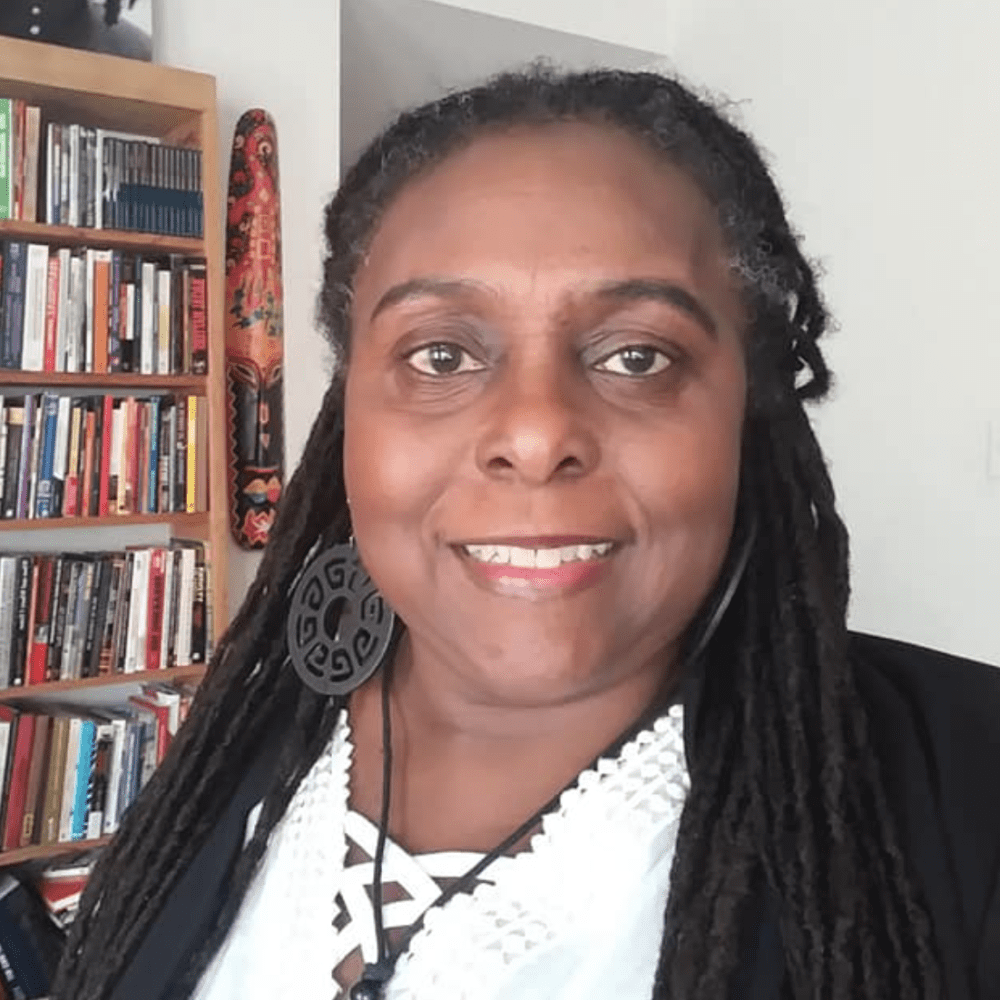Legacy and Culture of HBCU Marching Bands
Marching bands are one of the most recognizable and celebrated organizations at many historically Black colleges and universities (HBCUs). HBCU marching bands are often the center of culture on campus and act as important ambassadors for their university off campus. Bands are central to the HBCU experience and serve as vital cultural features of HBCU life.

The History of Marching Bands at HBCUs
The modern HBCU marching band style dates back to June 1, 1946, with the creation of the Marching “100” at Florida A&M College (FAMU). The band was founded by the school’s fourth band director, Dr. William P. Foster. Other schools had military-style field bands prior to the Marching “100” — Tuskegee Institute, for example, had field bands dating back to its time under Booker T. Washington in the early 1900s. However, the Marching “100” marks the beginning of the modern HBCU marching band.
More of an aspirational name at the time (with only 16 original members), Dr. Foster developed the Marching “100” into one of the premier marching bands in the country. He and the Marching “100” pioneered a new style that entertained audiences with high-stepping, horn-swinging showmanship infused with Black culture and Black excellence.
The Style and Flare of HBCU Marching Bands
From their inception, HBCU marching bands have sought to entertain Black audiences by infusing traditional marching band styles — like military marches and block marching formations — with African aesthetics. This has resulted in entertaining and meticulously planned performances that seek to connect the old and the new.
Nearly all HBCUs have created marching bands in much the same style as Dr. Foster’s Marching “100,” with many adding their own flourishes or subsections, such as drum lines, dancers, majorettes, and pom-pom and flag teams.
HBCU marching bands often coordinate band-wide dance routines and perform a mix of musical genres and songs made popular through Black culture (e.g., R&B, gospel, rap, and jazz). A review of the history of HBCU marching band performances through the decades is also a review of Black music and performance culture in general.
What Role Does the Band Play at an HBCU?
HBCU bands operate as brand ambassadors for their universities. They’re also fundamental to HBCU recruiting and marketing efforts. As some of the most visible organizations for HBCUs off campus, marching bands allow these schools to gain visibility and prestige for more than academics.
Performances on regional and national stages provide opportunities for HBCUs to reach wide television and social media audiences. For example, Dr. Foster grew the Marching “100” through televised Super Bowl performances and presidential inauguration parades.
Bethune-Cookman University’s marching band participated in the 2018 Netflix documentary “Marching Orders,” which highlighted the grueling process of auditioning and preparing for an HBCU marching band season.
Band can also be a credit course, and, therefore, students who play instruments are attending class. Members of marching bands must learn to balance their academics and social life with the rigorous demands involved in practicing for performances. This also applies to those who join a band as an extracurricular activity, such as dancers, majorettes, and flag team members.
HBCU marching bands’ ability to recruit talented students and represent schools is essential to these institutions’ overall operation. Institutions often seek students who are members of predominantly Black high school bands. It is also common for a high school band director at a predominantly Black high school to be an alumnus of an HBCU marching band.
More than Entertainment
These marching bands provide more than simple entertainment. To Dr. Foster, HBCU marching bands — particularly the FAMU Marching “100” — were part of a larger push for justice and anti-racism. Writing about his feelings after the assassination of Dr. Martin Luther King Jr., Dr. Foster stated that good people of all races stood up for justice … I wanted the Hundred to be part of that difference.
Whether tacitly or explicitly, HBCU marching band performances not only seek to entertain audiences or market their universities but also exude Black joy and Black excellence. They challenge racist stereotypes that stigmatize HBCUs and Black communities.
Participating in HBCU marching bands also creates a unique bond among members and increases their confidence. Not only do they spend extra time practicing to ensure precision in drills and movements, but they also understand that they are carrying on a legacy of pride and tradition. In some instances, the children of marching band members may attend the same HBCU and become band members themselves. The reaction of audiences to the high-stepping and culturally grounded showcasing of HBCU marching bands, whether in a stadium or in a parade, is one of joy and excitement.
3 HBCU Marching Band Traditions and Events
While many football halftimes are opportunities for spectators to buy refreshments and go to the restroom, HBCU halftimes are can’t-miss events. They’re so well attended that the band section is often overrun with fans desperately trying to watch these exciting performances.
1. The Fifth Quarter
One exciting HBCU marching band tradition is what is known as the Fifth Quarter: a special, often dueling performance between the two HBCU bands after a football game. The bands or different sections of the bands trade riffs and songs. Fans and alumni often crowd around the band sections to enjoy these performances.
The Fifth Quarter requires a mix of planning and spontaneity. These events are a form of friendly, but serious, competition between alumni, fans, and band members. Each side analyzes and appreciates the technical and artistic skill of the opposition as the bands perform. The way each band finishes its performance is also unique — HBCU marching bands have their own traditions and often end concerts with songs important to that band and fan base.
2. Homecoming
One of the most-anticipated events for HBCU marching bands, however, occurs during homecoming. Bands prepare their most elaborate field shows for the homecoming halftime show. And they’re usually the main attraction for the homecoming parade.
Homecoming week typically sees the return of alumni to campus and large crowds at band practices leading up to the football game. Marked by excitement and performances, homecoming is the highlight of the year — and the most exhausting week — for HBCU band members.
3. The National Battle of the Bands
Another important event, the National Battle of the Bands (NBOTB), allows HBCU bands to compete on the field rather than in the stands.
Each band performs its field show seeking to rouse and hype the crowd. Band members showcase their technical marching and playing skills, often in block formation marching routines while playing technical marches (a musical genre often associated with military music and John Philip Sousa).
There are also exhibition-style battles at football games between rival schools, such as the Florida Classic. At these games, typically only two HBCU bands perform. However, numerous high school bands are also sometimes allowed to perform. Often, these are important events for recruiting and fundraising.
Whether large-scale battles or rivalry showdowns, these events typically raise money for scholarships.
HBCU Bands Are Important
Marching bands play a key role at HBCUs for recruiting and fundraising, but they are also important cultural institutions that help shape the HBCU experience. From playing events at the local, national, and international levels, to entertaining audiences on campus during halftime, marching bands showcase what makes HBCUs unique within the higher education landscape.
Explore More College Resources

The Role and Legacy of HBCUs in Higher Education
Historically Black colleges and universities have played a significant role in providing accessible and equitable education to Black people in the United States.

by Pamela “Safisha Nzingha” Hill
Updated February 24, 2024



